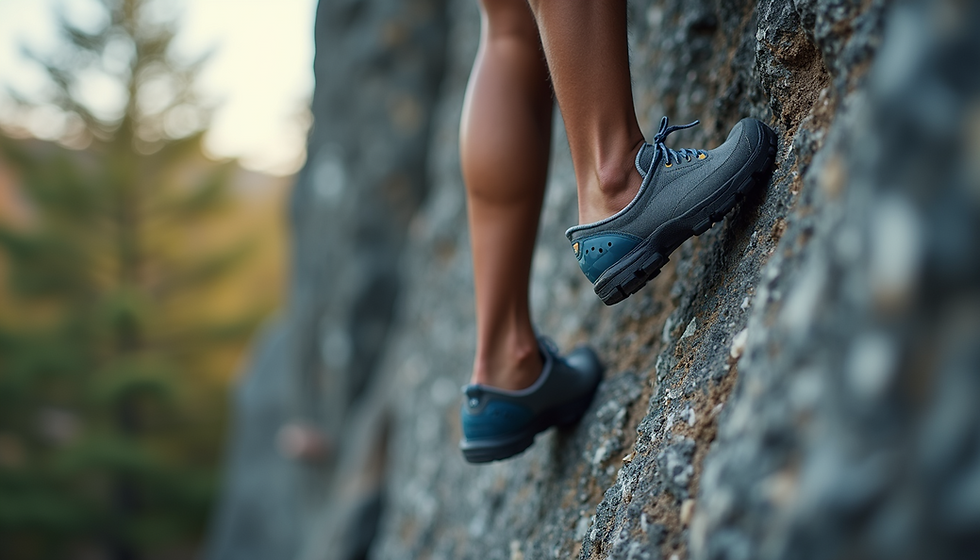How to take your dog to the crag
- info400279
- Apr 13, 2024
- 4 min read
Dogs at the crag can be a divisive subject, with some people welcoming the addition of a friendly pooch and others cringing at the sight of a resident crag dog. Myself and Anna have a Labrador called Rannoch who often joins us at the crag, however there are some important things to be aware of to ensure a good experience for everyone at the crag.
Fundamentally it is important to remember that not everyone likes dogs and even those that do don't necessarily want one at the crag. With some careful planning and a bit of thought you can eliminate a lot of the issues that can come with taking a dog to the crag, below are some thoughts and ideas that we use when we are taking Rannoch to the crag.

Location -
Is your intended crag dog friendly? Is there enough room to give your dog its own space to roam without encroaching on other people (ie away from paths and the bottom of routes). Is there a way to stop your dog wandering up to people uninvited (training (hard), temporarily tying them up on a long lead/rope).
When -
Think about when might be a good time to take your dog to the crag. For example a sunny bank holiday Saturday at Stanage is unlikely to be a good time as it will be really busy. A weekday though at the same crag might be totally appropriate.
Landowner -
Is the landowner where the crag is located happy for dogs to be on their land, this is especially important on privately owned land where there isn't guaranteed access. Are there restrictions? Lots of land owners require a dog to be on a lead at all times.
Weather -
Will your dog have enough shade/shelter depending on the season. A hot day can be nice to get out climbing, but dogs can find it hard to keep cool. Make sure they have plenty of access to water whilst you are climbing. Likewise a windy/damp cool day might not be the best choice for your four legged friend to be hanging around whilst you climb.
Livestock and animals -
Lots of the crags we climb at are grazing spots for livestock or are habitats for other wild animals. Unless your dog is impeccably well behaved (and even then livestock can be a big distraction for a dog) I would avoid crags with livestock/fragile wildlife or leave the dog at home.
Bored -
Keen your dog entertained. Bring along a favourite toy, something to chew (that isn't someone else's lunch!) and perhaps something for them to lie on, this helps them recognise "their" space and gives them something to do whilst you are away. Make sure you give quality attention between climbs, if it is fun and stimulating for them, the better experience you will both have.

Food -
Bring some doggy snacks and some water for the day. Being out at the crag all day, especially if there is a longish walk in, they will be probably be using more energy than normal. Keeping them well fed also helps avoid them rummaging through other peoples bags for food, a sure fire way to annoy other crag users!
Space -
If people don't want to meet your dog, respect their space, make sure they can continue to climb as if your dog isn't there (within reason). The crag is a place for everyone, but its important to be respectful. If someone asks you to put your dog on the lead, please do so.
Noise -
We are fortunate to have a very quiet dog, who only barks when he can't get sticks out of the sand and sometimes howls when sirens come past (usually much to everyone's amusement). Rannoch has also joined us at the crag since being a puppy and so he is used to settling when we are on a climb or out of sight (even on multipitch climbs). If you are new to taking your dog to the crag, I would suggest visiting somewhere you know will be quiet or empty, so that you can practice settling your dog and climbing without them crying out for you. If this is a problem, some hide and seek type games where the dog has to practice patience when you are out of sight might be helpful.
Age -
Puppies are mega cute, but they aren't are resilient as older dogs and have much shorter attention spans. Build up the amount of time climbing and at the crag slowly, so they can get used to the time in a new environment. Perhaps start with bouldering so that you can reduce the time between paying them attention (this could also work for noise training).
Distraction -
Some of the bad qualities a dog at the crag can have are not only annoying they can be distracting. Distraction in climbing can be a big cause of accidents, it only takes a moments lack of focus to miss tie a knot or mishear a climbing call, which could lead to a serious accident.
Mess -
It should go without saying, but make sure you clean up any mess that your dogs make!

Finally, if you bring a dog to the crag, you are responsible for it's behaviour, whether bad or good. The dog hasn't chosen to be there, so make sure the decisions you make help it to be a good experience for everyone rather than a bad experience. In our experience, a well behaved crag dog can be a great addition to a days climbing, but it can also be the opposite. I hope a few of the pointers above are helpful for anyone wanting to start taking their dog to the crag.
If you have any ideas or suggestions, comment below!



Comments